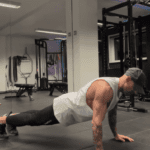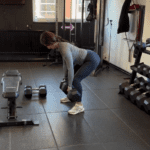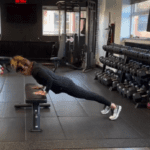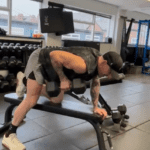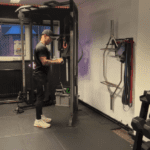After having a baby, fitness training can be an excellent way to achieve goals such as weight loss, muscle toning, core strengthening, and stress relief. However, it is crucial to approach postpartum fitness with care, considering the significant changes that you body has undergone during pregnancy and childbirth.
Here is a comprehensive guide to postpartum fitness training, focusing on strength training and cardio.
When to start?
The appropriate time to begin postpartum fitness workouts varies. For those who have had uncomplication vaginal deliveries, light exercise such as walking can start a few weeks after delivery. However, for those who have had C-sections or complicated births, it is recommended to wait until at least the 8-weeks, or consult with your medical provider before starting a fitness plan with your Personal Trainer.
It is important to avoid high-intensity activities like running, jogging, and heavy weightlifting for the first 12 weeks after delivery to allow the body to properly heal. After 6-12 weeks, you can gradually incorporate more moderate exercises such as cycling, swimming, and low-intensity core work, but you should still avoid difficult abdominal exercises until at least 12 weeks postpartum. By 12 weeks, you can slowly start to increase the intensity and duration of your workouts, including running and weightlifting, as long as you build up gradually, always listening to your body.
Initial focus
Initially, it is recommended to focus on major muscle groups affected by delivery, engaging in short periods of basic exercises for 10-20 minutes a day. As strength builds, the time and intensity of exercises can be increased.
Core and pelvic floor
Strengthening and regaining function in your abdominal muscles and pelvic floor is a primary goal. Core exercises such as deep belly breathing and pelvic tilts can help restore core health and function after giving birth.
Cardiovascular exercise
Walking is a gentle and effective form of cardio that can be started soon after birth – it is a simple way to ease into a fitness routine, it can be done with your baby, and it helps to improve blood circulation and encourage better sleep.
SAFE AND EFFECTIVE POSTPARTUM EXERCISES
Core strengthening
- Deep belly breathing: This helps to engage the diaphragm and reduce intra-abdominal pressure, benefiting the pelvic floor and core.
- Pelvic bridge: A gentle exercise that targets the glutes and lower back, helping to stabilise the core.
- Side planks: These work the obliques and are an effective full-body exercise for core strengthening.
Lower body strength
- Squats: With or without a resistance band, squats help to strengthen the thighs, hips and buttocks.
- Lunges: Forward lunges work the legs and can be done with proper form to avoid strain.
Upper body strength
- Baby glider: Using your baby as your weight, perform forward lunges to strength legs and back muscles.
- Rock-a-baby squats and curls: Holding your baby, perform squats to work on your legs and arms.
Cardiovascular workouts
- Walking: Start with an easy stroll and gradually work up to a power walk. You can increase the challenge by walking backward or in a zigzag pattern.
EXERCISE PRECAUTIONS
Avoiding certain exercises
During the first 8-weeks of postpartum recovery, avoid exercises that involve crunching, twisting, or any that may strain the abdominal area or pelvic floor.
Listening to your body
It is essential to listen to your body and not rush into pre-pregnancy levels of performance. Be patient and gently with yourself, and remember that recovery can take time. The key is to start low-impact and work up to higher-intensity activities at a pace that feels comfortable.
Monitoring symptoms
If you experience any unusual symptoms such as heavy bleeding, excessive soreness or headaches during, or after exercising, stop immediately and contact your GP.
ADDITIONAL TIPS FOR POSTPARTUM FITNESS
- Rest, hydration and nutrition: Focus on these elements in the early stages of your recovery.
- Gradual progression: Increase the length and intensity of workouts slowly to build stamina.
- Consult a Professional: Seek guidance from a Personal Trainer/Fitness professional who specialises in postpartum exercise.
In summary, postpartum fitness training should be approached with caution and a focus on gradual progression. Core strengthening, gentle cardio, and lower and upper body exercises are beneficial for postpartum recovery.
Always consult with a healthcare provider before starting any postpartum exercise regimen and listen to your body’s signals to avoid overexertion and injury.
A personal trainer is an investment in your health and well-being that can lead to long-term positive effects on your fitness, confidence, and overall health. PT Hale prides itself on being a social and safe space where you can workout individually, or with like-minded people to get the results that you want and deserve – LET’S GO!


